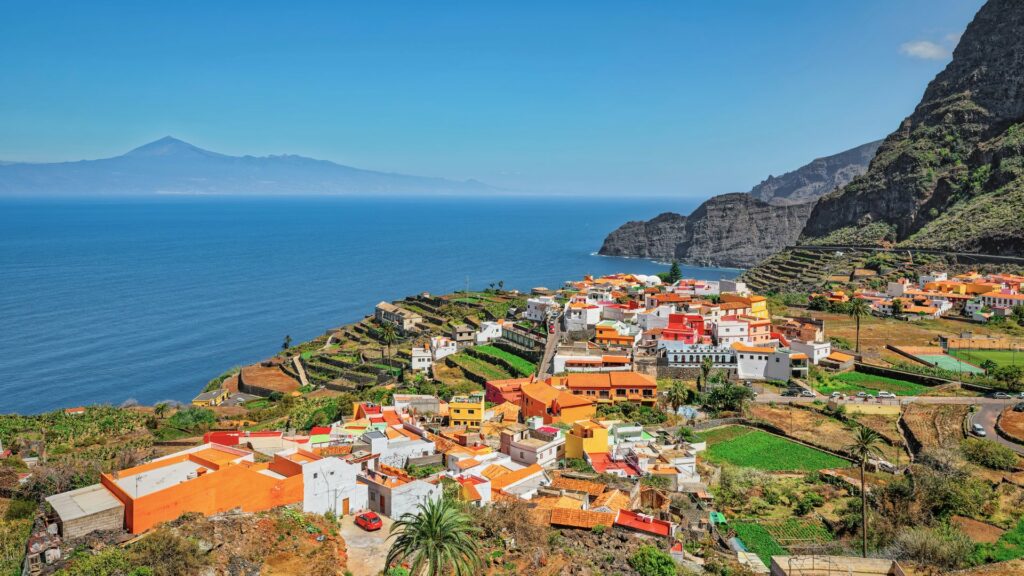The island of La Gomera, in the Canary archipelago, is divided into six municipalities, each with its own unique characteristics and particular charm.
San Sebastián de la Gomera
San Sebastian is the capital of the island and the main economic engine.
This municipality stands out for its history linked to Christopher Columbus, who stopped here on his voyage to the New World. Among the most emblematic places are the Casa del Pozo de la Aguada or La Aduana, the Torre del Conde, the hermitage of San Sebastián, among others.
In addition, its port remains an important hub and its economy has been oriented towards the service sector and tourism. It is also known as Isla Colombina since Columbus called it like that.
Hermigua
Located in the north, Hermigua is known for its lush valley and its rural tourism offering. Among its attractions are the Convent of San Pedro and the Ethnographic Museum. The landscape is characterised by banana plantations and vineyards, and the area offers numerous hiking trails, especially in the Garajonay National Park.
Vallehermoso
Vallehermoso is the largest municipality on La Gomera, with a great diversity of landscapes ranging from arid areas to dense laurel forests. Its economy has traditionally depended on agriculture and palm honey production. It is an ideal destination for nature lovers and hikers.
Agulo
Agulo, known as the “bonbon of La Gomera”, is a picturesque municipality on the north coast. With its traditional houses and narrow cobbled streets, it offers breathtaking views of the Teide in Tenerife. The local economy is based on agriculture, with bananas and other agricultural crops.
Alajeró
Located in the south of the island, Alajeró is home to La Gomera airport and is notable for its cliffs and the La Caldera Natural Monument. Playa Santiago, a charming fishing village within the municipality, has developed as a tourist destination. Traditional architecture and local festivities, such as the Fiesta de la Virgen del Paso, are prominent cultural features.
Valle Gran Rey
This municipality on the west coast is known for its beaches and its attraction for alternative tourism, especially popular with German visitors.
The economy has shifted from agriculture and fishing to tourism. Visitors enjoy its impressive cliffs, small beaches and the cultural richness represented in local festivities such as San Salvador.
Thus, each municipality of La Gomera offers a unique experience, combining spectacular natural landscapes with a rich cultural heritage and warm hospitality. This diversity makes La Gomera an attractive destination for all types of travellers.

